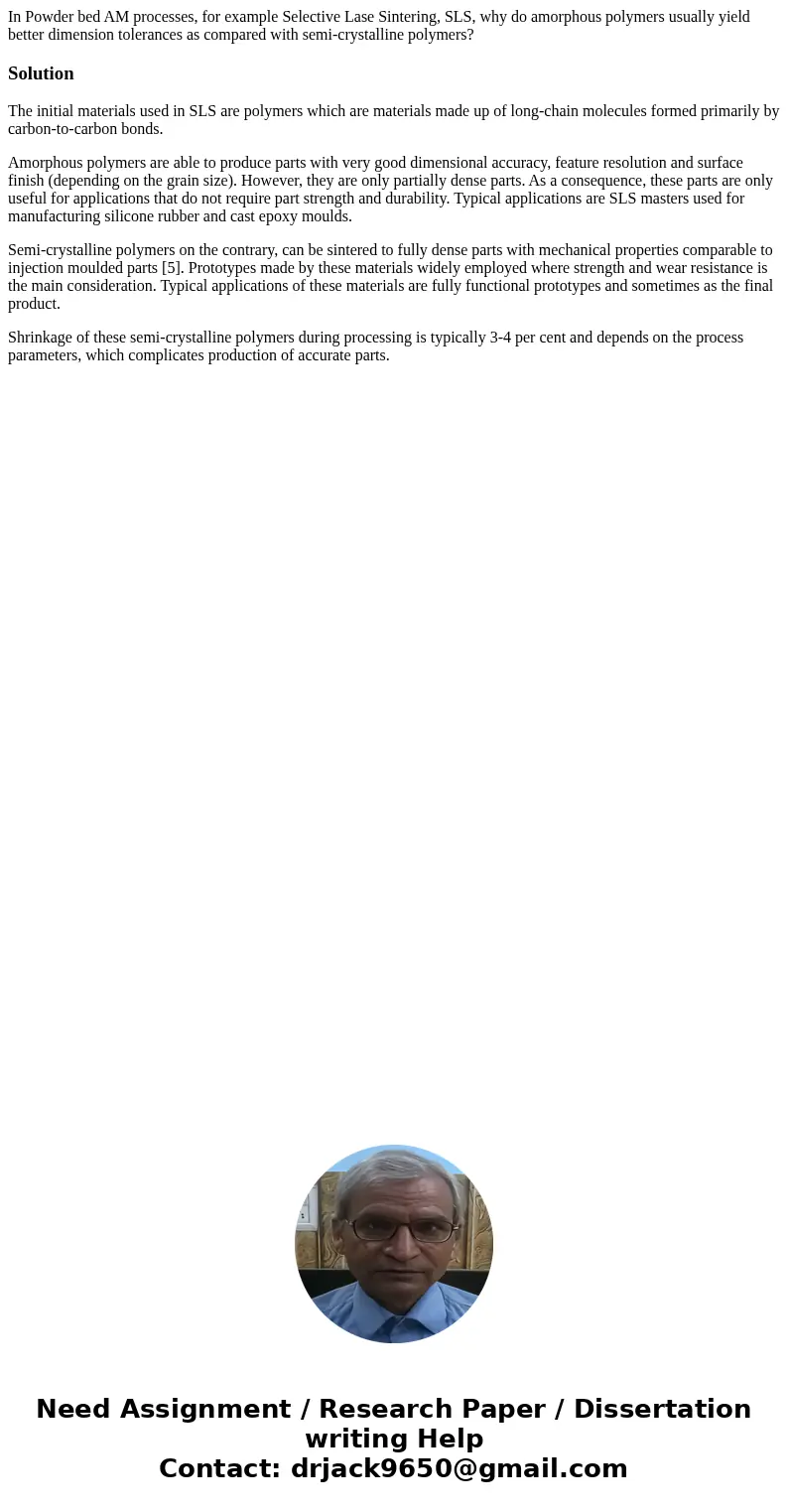In Powder bed AM processes for example Selective Lase Sinter
Solution
The initial materials used in SLS are polymers which are materials made up of long-chain molecules formed primarily by carbon-to-carbon bonds.
Amorphous polymers are able to produce parts with very good dimensional accuracy, feature resolution and surface finish (depending on the grain size). However, they are only partially dense parts. As a consequence, these parts are only useful for applications that do not require part strength and durability. Typical applications are SLS masters used for manufacturing silicone rubber and cast epoxy moulds.
Semi-crystalline polymers on the contrary, can be sintered to fully dense parts with mechanical properties comparable to injection moulded parts [5]. Prototypes made by these materials widely employed where strength and wear resistance is the main consideration. Typical applications of these materials are fully functional prototypes and sometimes as the final product.
Shrinkage of these semi-crystalline polymers during processing is typically 3-4 per cent and depends on the process parameters, which complicates production of accurate parts.

 Homework Sourse
Homework Sourse